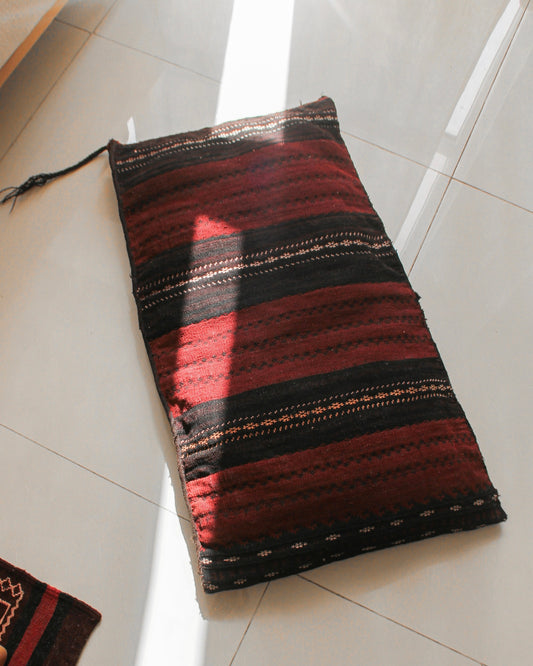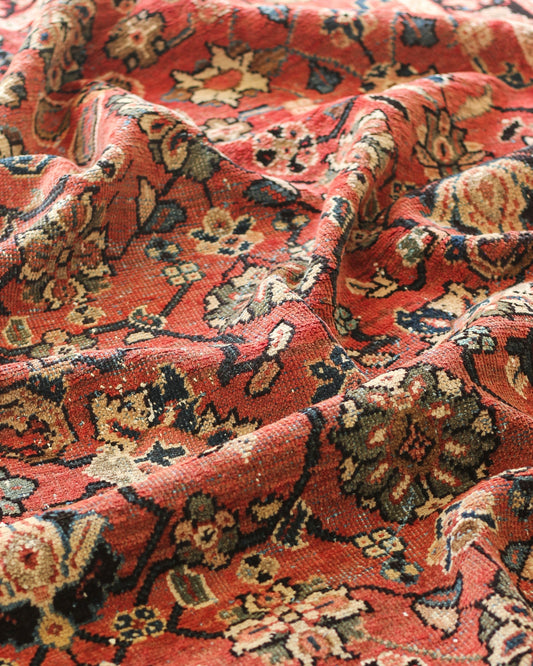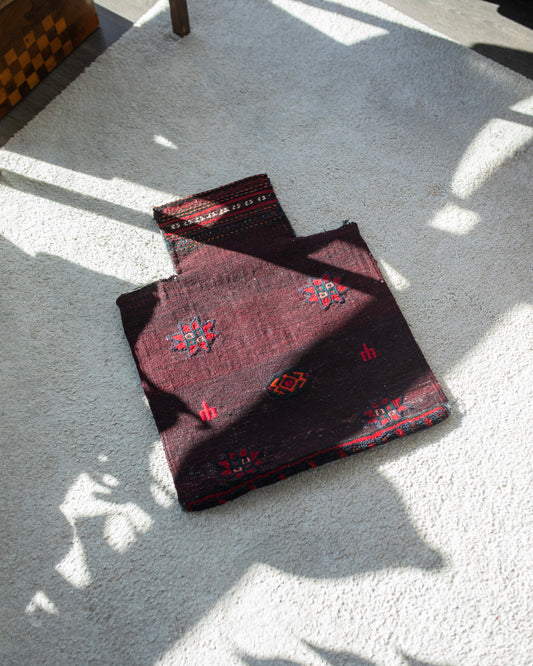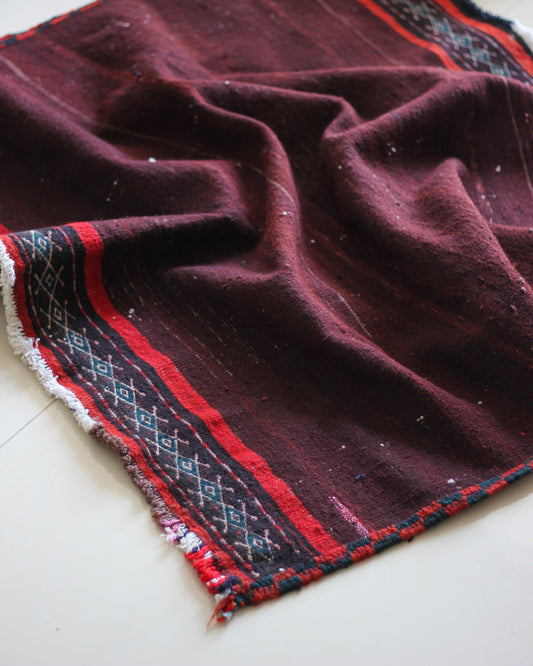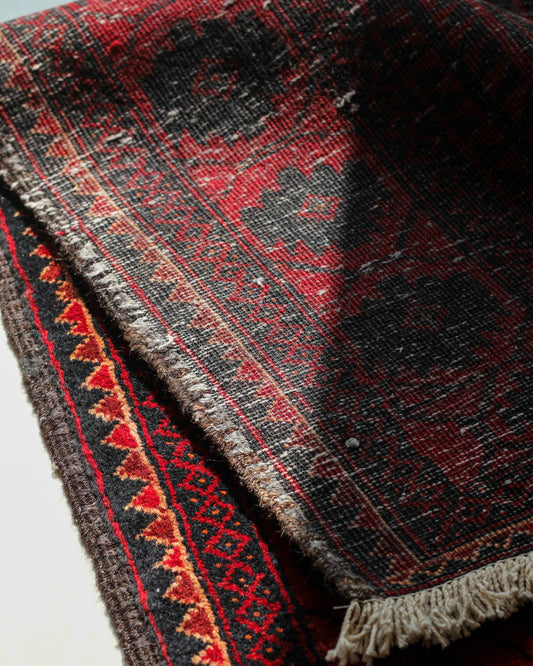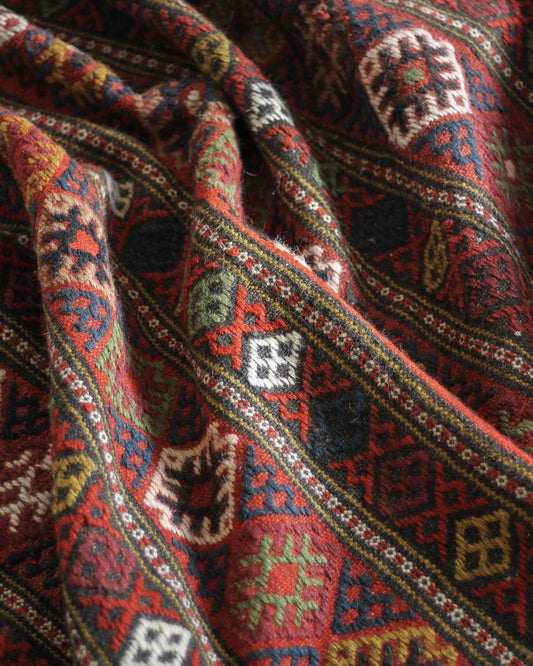Who are the Baloch(Baluch) People?
In accordance with the lore, Baloch people’s ancestors originated from Aleppo, Syria. They claim their lineage as descendants of Ameer Hamza, the uncle of the Islamic prophet Muhammad, who established residence in Halab, known today as Aleppo. Following their participation in the conflict against the second Umayyad Caliph, Yazid I, at Karbala, during which Ameer Hamza's descendants supported and fought alongside Husayn ibn Ali in 680, they embarked on a migration to the eastern and southeastern regions of Persia, with a particular focus on Sistan, Iran. The precise origins of the term 'Baloch' remain shrouded in uncertainty.

In Afghanistan's Shadow: Baluch Nationalism and Soviet Temptations by Selig S. Harrison
According to the Baloch historian Naseer Dashti, the name of this ethnic group can be traced back to Balaschik, a community residing in Balasagan, a region located between the Caspian Sea and Lake Van in what is now Turkey and Azerbaijan. It is believed that these people migrated to Balochistan during the Sassanid era. Vestiges of the original name, such as Balochuk and Balochiki are still reported to be in use as ethnic designations in Balochistan today. Alternatively, some writers propose that the term may derive from Sanskrit words Bal signifying strength, and Och meaning high or magnificent.

Hazara girl wearing traditional Baloch jewellery.
In ancient times, Baloch women commonly engaged in dances and the singing of folk songs at various events. The tradition of a Baloch mother singing lullabies to her children has always played a pivotal role in passing down knowledge from one generation to the next. Gold ornaments, including necklaces and bracelets, hold a special place in Baloch women's traditions. Among their most cherished jewelry items are Dorr, which are heavy earrings securely fastened to the head with gold chains to ensure they don't harm the ears. They also adorn themselves with a gold brooch known as Tasni which comes available in various shapes and sizes, handcrafted by local jewelers. This brooch is used to fasten the two parts of their attire over the chest.
Beyond the Baloch dressing styles, indigenous traditions and local customs also hold significant importance for the Baloch community.
What Is a Balochi Rug?
Let’s step into the enchanting world of Baloch rug-making, where tradition meets creativity, and history weaves a vibrant tapestry. The Baloch people, renowned for their enduring commitment to this ancient craft, have refined their rug-making skills over countless generations. Balochi rugs and carpets stand as celebrated icons with their exquisite craftsmanship and intricate designs being a testament to a rich cultural heritage. They vividly narrate the story of a nomadic lifestyle, embodying the essence of this remarkable community. Each rug is a masterpiece, an expression of Baloch artistry, and a testament to their enduring legacy. Geometric and tribal motifs adorn Balochi rugs, serving as mirrors to the culture from which they spring. This artisanal tradition is a living heritage, passed down through generations, binding families and communities in a shared commitment to artistic preservation. The Baloch people's deep connection to rug-making is an indication of their unwavering dedication to safeguarding their history and creating functional art that enchants the world.
A Balochi rug, known as a Baluch rug or Baluchi rug, represents a handwoven masterpiece originating from the Balochistan region, spanning across parts of Iran, Pakistan, and Afghanistan. These rugs are esteemed for their unparalleled craftsmanship and distinct aesthetic characteristics. Each thread, each knot, carries with it the legacy of a people committed to weaving history, tradition, and artistry into every stitch. As you unfurl a Balochi rug, you're not merely laying down a floor covering; you're embracing a piece of history, a work of art, and a tribute to the indomitable spirit of the Baloch people.
Balochi Rug Knotting Techniques
Balochi rugs are known for their unique weaving technique, frequently employing the asymmetrical or single-wefted knotting method. In this process, each knot is tied around a single warp thread, which runs vertically on the loom, creating a distinct texture and pattern. The choice of knotting technique and the tightness of the weave play a pivotal role in shaping the rug's durability, texture, and overall aesthetic. Skillful weavers harness this method to not only create an intricate visual charm but also to implement the rug’s ability to withstand wear and the passage of time, making Balochi rugs cherished as both works of art and functional textiles.
 Persian (Sennah) and Turkish (Ghirodes) knotting.
Persian (Sennah) and Turkish (Ghirodes) knotting.
What are the characteristic design patterns and motifs that distinguish Balochi rugs?
The designs of Balochi rugs are elaborately woven into the cultural heritage of the Baloch people, reflecting motifs of profound significance to their way of life and history. These rugs are often imbued with symbolism spanning from nature's embrace to the core of tribal identity. As a result of tribal affiliations, the design elements in Balochi rugs exhibit a splendid tapestry of diversity. Renowned for their wealth of patterns and motifs, Balochi rugs remain deeply anchored in the cultural legacy of the Baloch people.
The following are some of the prevalent design patterns and motifs present in Balochi rugs.
Geometric Patterns:
Baluchi rugs are often adorned with geometric designs such as hexagons, triangles, diamonds, and squares. These shapes are not merely aesthetic; they carry profound meaning. Hexagons, for instance, can symbolize the harmony between nature and human existence, while triangles represent the trinity of earth, water, and sky. Diamonds may signify the nomadic lifestyle, and squares often represent stability and unity within tribal identity.
Animal Motifs:
Animals such as camels, goats, and birds frequently grace the canvas of Balochi rugs. These motifs serve as a tribute to the pastoral and nomadic lifestyle of the Baloch people. Camels, known as the "Ships of the Desert", symbolize endurance and resilience. Goats are an embodiment of self-sufficiency, while birds represent freedom and the link between earth and sky.
Floral Motifs:
The delicate beauty of flowers and plants blooms on many Balochi rugs, paying homage to the natural splendour and agricultural traditions of the region. These motifs celebrate the fertility of the land and the importance of agriculture in Baloch life, reflecting a deep connection to the earth.
Human Figures:
Some Balochi rugs feature human figures, often depicted in traditional attire or engaged in daily activities. These depictions offer insights into the daily rituals, customs, and traditions of the Baloch people. They act as snapshots of cultural identity, portraying the unique character of Baloch society.
Tribal Symbols:
The diversity in Balochi rug designs is strongly influenced by tribal affiliations and symbols. Each tribe possesses its own distinctive motifs, colours, and patterns, passed down through generations. These symbols serve as a visual marker of tribal heritage, acting as a living legacy within each rug.
Prayer Designs:
Certain Balochi rugs incorporate prayer designs, featuring elements like Mihrabs (prayer niches) and other symbols related to the Islamic faith. These rugs are not only works of art but also serve a sacred purpose, providing a space for prayer and meditation. They highlight the religious significance woven into the Baloch culture
Pictorial Storytelling:
In select Balochi rugs, you'll discover a form of pictorial storytelling where the rug weaver shares narratives or conveys messages through images and symbols. These rugs are like visual tales, offering a glimpse into the cultural accounts, and values of the Baloch people.
Border Patterns:
Elaborate border patterns encompass the central design of Baluchi rugs, adding an extra layer of complexity and beauty. These border designs can vary greatly in style and complexity, showcasing the weaver's skill and creativity. They serve to frame and enhance the rug's central narrative, much like an ornate frame around a masterpiece.
The Vibrant Colours of Balochi Rugs
Balochi rugs stand out with their breathtaking and diverse colour schemes, a true reflection of the artistic finesse of Balochi weavers. The intricate tapestry of colours is achieved through a blend of natural and synthetic dyes, offering a vast palette. Traditional Balochi rugs draw from natural dye sources like plants, minerals, and insects, crafting subdued earthy tones such as the rich red of madder root, the deep blue of indigo, and the golden yellow from pomegranate rind. In more contemporary rug-making, synthetic dyes take the stage, allowing for vibrant and vivid hues that let weavers blend modern flair with traditional designs. These rugs are a vivid canvas of colours, encompassing a range from fiery reds to serene blues, lush greens, sunlit yellows, warm browns, and even more sophisticated shades like elegant burgundy, soothing teal, and exotic saffron. Each colour carries profound cultural and tribal meaning, making each Balochi rug a unique masterpiece.
The dyeing process for wool in Balochi rugs is a meticulous and artful journey, consisting of several key steps:
1. Preparation
It all begins with raw wool. This wool is carefully cleaned and scoured to remove impurities and any natural grease that may be present. This step ensures that the wool is pure and ready to accept the dye.
2. Mordanting
Once the wool is clean, it's treated with mordants. Mordants are substances that help the dyes adhere to the wool fibres and set properly. In the case of Balochi rugs, common mordants used include alum and iron. The choice of mordant can influence the final colour outcome.
3. Dyeing
The treated wool is then submerged in dye baths. These dye baths can contain dyes derived from natural sources, like plants and minerals, or synthetic dyes for more contemporary designs. The duration of immersion in the dye bath is crucial; the longer the wool stays in, the deeper and more intense the colour becomes. This step is where the magic of colour transformation takes place.
4. Rinsing
After the dyeing process is complete, the wool is thoroughly rinsed. This step serves to remove any excess dye and mordants, ensuring that the final colour is vibrant, even, and free from any unwanted residues. Proper rinsing is essential to maintain the quality of the colours.
5. Drying
Finally, the dyed wool is laid out to dry under the sun. This step not only dries the wool but also helps set the colours further. Sunlight can have a natural setting effect on dyes, enhancing the permanence of the colours and bringing out their full vibrancy. This process also connects the rug to the landscape, as many Balochi rugs are laid out to dry in the open air, embracing the elements.
The Balochi rug weavers have a deep understanding of colour blending and the art of dyeing. They use this expertise to create ornate patterns and harmonious colour combinations, resulting in rugs that are not only aesthetically pleasing but also culturally significant. The vibrant colours in Balochi rugs not only contribute to their visual appeal but also represent the Baloch people's connection to their environment. The choice of colours and the dyeing process are vital aspects of the Balochi rug-making tradition, contributing to the uniqueness and beauty of each piece. Each step in the dyeing process requires skill and precision, and it's through these careful and thoughtful stages that the exquisite and vibrant colours of Balochi rugs are achieved, transforming simple raw wool into works of art.
The Charm of Balochi Rug Sizes
Balochi rugs tend to be small in size, a characteristic shaped by a blend of cultural, practical, and historical factors. The Baloch people's nomadic lifestyle, marked by the constant movement of herds across vast regions, favoured smaller, more portable rugs that could easily accompany them on their journeys. These compact pieces are versatile, serving as prayer rugs, floor coverings, wall hangings, and even saddlebags, perfectly aligned with the Baloch way of life. The traditional weaving techniques are finely tuned for crafting intricate, smaller rugs, and the scarcity of resources in the rugged and arid regions where the Baloch reside often lends itself to the production of smaller pieces. These techniques have been passed down through generations and are optimised for crafting detailed small rugs. Balochi rugs are celebrated for their fine detail, a quality that is better achieved in smaller formats, and their heirloom-quality holds profound cultural significance as cherished gifts and family legacies. While larger Balochi carpets cater to various market demands, the smaller rugs remain a timeless emblem of Baloch culture and craftsmanship.
The practice of weaving rugs and textiles has been an integral part of the Baloch people’s culture for generations, serving as both a practical and artistic expression. Each of their various tribes has their own unique cultural traditions and design aesthetics. These tribal affiliations have significantly influenced the patterns, motifs, and colours found in Balochi rugs, with each tribe's weavers passing down their distinct techniques and designs through years. Balochi rugs are not just textiles; they are a reflection of the Baloch people's resilience, creativity, and connection to their land, making them treasured pieces of Balochi heritage that continue to capture the attention of rug enthusiasts and collectors worldwide.
Authored by Ali Zoie - Oct 17th, 2023
References:
Dashti, The Baloch and Balochistan 2012, pp. 8, 33–34, 44.
Olson; et al. (1994). An Ethnohistorical Dictionary of the Russian and Soviet Empires. Greenwood Publishing Group. p. 101. ISBN 978-0313274978.
Kreyenbroek, Philip G. (2010). Oral Literature of Iranian Languages: Kurdish, Pashto, Balochi, Ossetic, Persian and Tajik: Companion Volume II: History of Persian Literature A, Volume 18. I. B. Tauris. ISBN 978-0857732651.
"Baloch Society & culture". Baask.com. Archived from the original on 16 September 2011. Retrieved 7 September 2010.



